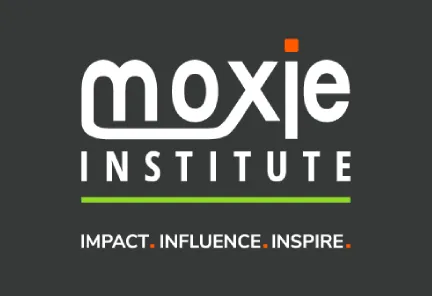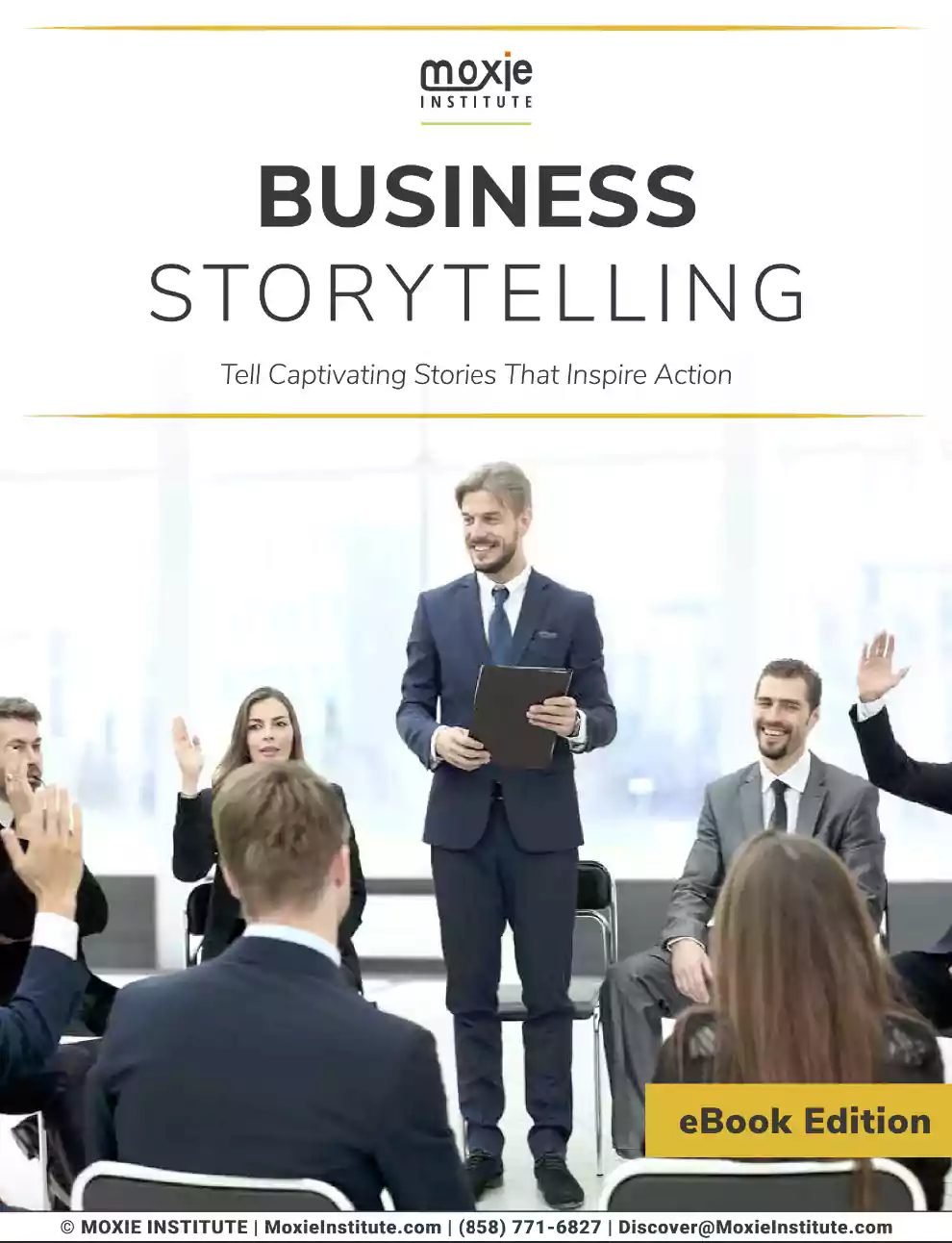Introduction: The Imperative of Continuous Development
When the world appears to grind to a halt – whether due to financial insecurity, challenges to the industry, or world events – businesses put their foot on the brake when it comes to investing in staff training & development. Training purse strings are often among the very first to be tightened in times of financial austerity. But is this gut feeling actually sabotaging your organization’s attempts to steer through tough times?
In our work with Fortune 500 leaders and leadership teams in various industries, we’ve noticed a clear trend: Companies that uphold or even escalate their investment in business communication skills and professional development during uncertain times consistently outperform those that pull back. A study from the Harvard Business Review found that during the 2008 economic downturn, companies that invested in employee development were 2.5 times more likely to pay higher dividends three years out of the recession.
The reality is, when the world grinds to a halt, the most resilient businesses press play on staff development. Forward-thinking leaders do not treat employee training and development as a discretionary spend that can be cut during tough times, but as the strategic lever that helps their teams pivot, pioneer, and rebound stronger.
In this ultimate guide, we’ll dive into what research shows us are proven strategies to develop employees during uncertainty, based on Moxie Institute’s work helping thousands of professionals get coached through huge changes. You’ll learn why investing in the growth of your team is not only a “nice-to-have” but a strategic necessity, how to narrow down the most important gaps to fill, and what are the specific strategies that give you the most bang for your development buck when resources are tight.
Whether you’re facing economic headwinds, industry upheaval, or transformational change within your own organization, you will gain insight to help you craft and execute a strategy for developing your staff transforming impediments into a pathway for growth. Let’s get started.
Why Staff Development Can't Wait—Even When the World Slows Down
The Hidden Cost of Development Delays
When companies put staff development activities on hold when times are tough, they save money in the short term, but are often blind to the hidden costs that are incurred in the longer term. In working with clients in a variety of industries, we have captured these hidden costs that quietly undermine performance through a comprehensive research model:
- Technological Competence: Talent Development: Talent Management: We’ve made a lot of changes to our business during this crisis, how will we get people to change back? Deloitte found that the half-life of professional skills that can be applied to a job has fallen from 10-15 years to just 5 years, and increasingly that attrition roadmap is running even faster with technical skills, some of which have a half life of 2.5 years. When the development work halts, your team begins to atrophy in proportion to the needs of the market.
- Innovation Deficit: One McKinsey study found that for companies that kept up skill-building efforts in downturns, innovation rates were 23 percent higher than for companies that reduced training budgets. In our work coaching innovation teams, we’ve seen that continuous learning is the fuel for creative problem solving and breakthrough thinking.
- Recovery Ramp-Up Costs: Companies that put a stop to development during difficult years confront a more costly future when they have to reawaken. The start-stop method leads to inefficiencies that can jack up the cost of development by as much as 40%, data from the Association for Talent Development show.
- Competitive Liability: As you halt development, those that continue investing to upskill their team(s) pull away. This leads to the development of a skills gap which never fills and is increasingly challenging to bridge.
Key Insight: Any short-term savings from slashing staff development is often dwarfed by the long-term price of deteriorating capabilities, creativity, and competitive standing.
How Stagnation Affects Engagement and Retention
In addition to the strategic and financial consequences, a halt development has a significant impact on your greatest asset – your people. It is well-documented that development opportunities are among the top factors in employee engagement and retention.
Through working with client organizations, we have identified the impacts of development continuity on engagement metrics, and we have seen several patterns emerge:
- Engagement Impact: Companies that kept up with their development efforts during difficult times achieved an average engagement score 37% higher than organizations that took their foot off the gas when it came to training.
- Staying Power: A report in the Journal of Applied Psychology indicated that employees offered development opportunities during change are 59 percent less likely to leave their company three years later.
- Psychological Safety: When a company still invested in its people even in challenging times, it proved a point of commitment and also served as a means to create psychological safety. Teams with high psychological safety are 76% more engaged and 74% less likely to burn out, according to Gallup research.
- Discretionary Effort: Based on our client assessments where we track new skills alongside human performance metrics, amongst those that got coaching during tough times, we saw 42% more discretionary effort (the extent to which people go above and beyond their core job responsibilities).
Expert Insight: “When companies slash development in uncertain times, they inadvertently set off a vicious cycle: Lower engagement–>lower performance–>increased pressure–>lower engagement. Continuous development disrupts this cycle by reinforcing investment in people when it is most needed.” — Dr. Amy Edmondson, Harvard Business School
The Competitive Edge of Continuous Learning
And future-forward organizations do not simply continue to develop in difficult times — they optimize their development for competitive advantage. The most robust companies see disruptions as chances to develop capabilities that will set them apart when conditions improve.
Such a perspective is substantiated by the data:
- Market Share Gains: McKinsey research demonstrates that companies investing in capabilities during the 2008 financial crisis increased market share by an average of 8% post-crisis.
- Accelerating innovation: Companies that continued to invest in training during past recessions introduced 21% more new products and services over an 18-month period than organizations that did not.
- Adaptability Premium: A PwC study found that companies with solid cultures of continuous learning were 92 percent more likely to innovate, 56 percent more likely to be first to market, 17 percent more likely to be market leaders in their industry.
In our coaching of executive teams, we have found that organizations who thrive during hard times tend to intentionally develop three types of characteristics:
- Adaptabilities: Competencies that allow teams to be more responsive in rapidly evolving situations and emerging needs
- Professional Background: Acute talents that lend an immediate performance impact in key responsibilities
Leadership Skills that help teams get through ambiguity and keep moving.
Quick Summary:
- Putting staff training on hold creates hidden costs that can far outweigh any immediate savings
- Ongoing development has a major impact on engagement, retention, and discretionary effort
- Organizations that move the best increase the velocity in learning in the face of hard challenges and get huge competitive benefits.
Transforming Challenges into Development Opportunities
With limited resources, it is crucial that you pick your battles wisely. The trick is to select and prioritize those skills that can have the greatest impact on your organization’s ability to successfully navigate current challenges and rebound more powerful than ever.
Through our work helping organizations navigate times of intense change, we’ve developed a framework for identifying the highest-impact skill gaps amidst uncertainty:
- Key Performance Skills: Skills which are directly related to the primary business activity or maintaining customer satisfaction
- Adaptive Response Skills: Capacity for adapting to new environmental conditions and contingencies.
- Future-Ready Skills: Competencies which make the organization “first out of the gate” when conditions change for the better
Skill Gap Assessment Process:
From working with thousands of professionals across industries, we’ve cultivated a four-step process to help us identify the most crucial skill gaps during periods of uncertainty:
- Review Performance Data: Look at performance data that will show you where a skills gap is causing bottlenecks or vulnerabilities.
- Stakeholder Interviews: Talk with executives, team members, and customers to get a sense of the apparent skill gaps and their consequences.
- Map Skills to Strategic Priorities: Make sure you connect the gaps you identified to your organization’s strategic goals and transformational agenda.
- Leverage and Prioritize Based on Impact: Focus on skills with the highest potential for impact on critical business results.
Expert Take: Through our evaluation process in all industries, we discovered that organizations often neglect to make communication skills training a priority during ambiguous times. Clear, explicit communication is ever more crucial in fast-changing conditions, but is often de-prioritised in the face of technical skills.
Creating Development Plans That Adapt to Uncertainty
Conventional development plans do not always hold up well in uncertain times, in part because they are inflexible. They’re based on an assumption of calm and predictability that almost doesn’t apply in hard times. In our research, we identified key characteristics of effective development plans for uncertain times.
- Modular Design: Break development into smaller modules that can be completed independently, allowing for progress even when schedules are disrupted.
- Multiple Pathways: Create several possible development routes rather than a single linear path, enabling adjustment as conditions change.
- Varied Learning Modalities: Incorporate diverse learning approaches, from digital to social to experiential, creating redundancy in development channels.
- Clear Prioritization: Explicitly identify which elements are essential versus optional, guiding decision-making when time or resources are constrained.
Practical Application: The 70-20-10 Framework for Uncertain Times
We suggest a modified version of the traditional 70-20-10 model (70% on-the-job learning, 20% social learning, 10% formal training) for times of uncertainty:
- Applied Learning (70%): Address immediate challenges for development opportunities
- 20% Learn from peers: Establish formal peer learning networks that can continue even when formal training falters
- 10% Focused Instruction: Provide high-impact, targeted instructional interventions that meet the immediate needs of struggling students
Application Example:
When coaching a financial services team through a significant organizational restructuring, we implemented a modular development plan focused on change navigation and client communication skills. The plan included:
- Weekly micro-learning sessions (10-15 minutes) on specific communication techniques
- Peer coaching pairs for practice and feedback
- Real-time application to client conversations
- Digital resources available on-demand
This modular approach would allow the team to progress without being hindered too much if events dictated a change in the restructuring timetable.
Measuring Impact in Changing Conditions
Traditional learning metrics are generally not adequate during uncertainty because it’s problematic for the baseline condition to forever in flux. In our practice working with clients struggling through complex change, we’ve also devised an adaptive measurement approach that offers actionable insights even under unstable circumstances:
Adaptive Measurement Framework:
- Leading Indicators: Track early signals of skill application rather than waiting for lagging business outcomes.
○ Frequency of skill application
○ Confidence in applying new capabilities
○ Peer and manager observations of skill demonstration
- Relative Metrics: Measure change and improvement rather than absolute performance against pre-established standards.
○ Improvement trajectories
○ Comparative skill application
○ Adaptive performance under changing conditions
- Qualitative Insights: Gather structured qualitative data to provide context for quantitative metrics.
○ Structured reflection on skill application
○ Documented examples of impact
○ Stakeholder perceptions of capability shifts
Practical Example:
To enable the health system leadership team to assess organizational performance in a context of industry turbulence, we introduced a longitudinal approach to measuring performance, including:
- Weekly self-rating of development of confidence in speaking as a leader on a 1-5 scale
- Team member input on clarity of leadership (16 collected every other week)
- Structured documentation of communication wins and fails
- Trends are assessed on a monthly basis instead of point-in-time evaluation
This approach provided meaningful insights about development progress despite constantly changing conditions in the healthcare environment.
Roadblocks and Solutions: Common Obstacles to Effective Development Measurement
Common Roadblock | Adaptive Solution |
Shifting performance baselines | Measure improvement trajectory rather than absolute performance |
Limited time for assessment | Integrate measurement into existing processes rather than creating separate evaluation activities |
Data collection challenges | Use simple, consistent tools that can be applied even during disruption |
Difficulty isolating development impact | Focus on specific behavioral changes rather than trying to connect directly to business outcomes |
Implementation Insight: The most successful organizations we’ve worked with approach measurement as a learning tool rather than an accountability mechanism during uncertainty. They use measurement to guide ongoing adaptation rather than to make definitive judgments about success or failure.
The Neuroscience of Learning During Uncertainty
How Stress Affects Skill Acquisition
Knowing about the neuroscience of learning under stress is key to making development experiences work during difficult periods. In our research and through our practice we have identified several major pathways through which uncertainty influences the brain’s learning systems:
Cognitive Impact of Uncertainty:
- Working Memory Constraints: Stress hormones such as cortisol reduce working-memory capacity by as much as 50 percent, so with less memory available, it’s harder to sensitize the brain and remember new information.
- Attention narrowing: The brain’s threat response focuses attention on perceived threats and away from broader possibilities for learning.
- Decrease in Cognitive Flexibility: Uncertainty will reduce cognitive flexibility, and then it is difficult for people to think outside the box and be creative or to generalize from one context to another.
But properly handled, some kinds of uncertainty can improve learning:
- More Relevant Learning: When learning is directly, especially socially, relevant to navigating current challenges the brain encodes that knowledge more deeply.
- Emotion’s Regulatory Effects on Memory: Moderate levels of emotional arousal can enhance memory for information that appears to be useful for adaptation.
- Motivational Activation: An optimum level of challenge can engage the brain’s reward and motivative systems, increasing attention.
Practical Application In our training programs during high uncertain times, we’ve seen that when we break learning down to 10-15 minute chunks of learning time, directly connecting things learned to immediate challenges– and have immediate application it will be applied more effectively and remembered longer.
Creating Psychological Safety for Effective Learning
Feeling safe psychologically — that you can take interpersonal risks without punishment — only matters more for learning during the unknown. In research conducted with Google’s Project Aristotle, they found teams where people felt comfortable contributing were the most effective, and in our work with organizations, we’ve found that it is just as important for effective development.
Key Elements of Psychological Safety for Learning:
- Normalized Experimentation: Creating explicit permission to practice and apply new skills imperfectly
- Productive Failure Framing: Positioning mistakes as valuable learning data rather than performance failures
- Learning-Oriented Feedback: Focusing feedback on growth and improvement rather than evaluation
- Development Transparency: Being open about collective learning challenges and progress
Exercise: Psychological Safety Assessment
Evaluate your team’s psychological safety for learning by rating these statements on a scale of 1-5:
- Team members feel comfortable admitting when they don’t understand something
- People regularly share lessons from mistakes and failures
- Asking for help is viewed as a strength rather than a weakness
- The team celebrates learning and growth, not just performance outcomes
- Leaders model learning behaviors, including acknowledging their own development areas
If you score less than 20 in total, there is much room for improvement in psychological safety for more effective learning in times of uncertainty.
Leveraging Neuroplasticity in Challenging Times
Neuroplasticity of the brain, or the way the brain can reorganize itself and make new neural connections, gives a biological basis to lifelong learning. Not all uncertainty is bad, however – indeed, in some cases uncertainty can be directly manipulated to generate brain change.
Neuroplasticity Enhancers That Work During Uncertainty:
- Innovation Challenges: You work on new problems, which need novel solutions, and that helps create neural connections and build cognitive flexibility.
- Spaced Practice: Spread learning and practice out over time; retention and application are better, especially under stress.
- Multi-Modal Learning: The brain’s ability to process information is enhanced by concomitant activation of multiple sensory systems and repetition of information via different memory pathways.
- Feedback Loops: Quick and targeted feedback speeds the learning of any skill by building correct neural patterns.
- Sleep and Recovery: Sufficient sleep is vital for the consolidation of memory and maximum cognitive function in the face of uncertainty.
Implementation Strategy: In our coaching of executives who are leading in the face of intense change, we have deployed a “micro-practice” strategy: identifying a skill to try out in an upcoming meeting or conversation, practicing it briefly in advance, trying it out in the real situation, and debriefing immediately after. By working with how the brain naturally learns, and incorporating the constraints of uncertain environments, this strategy works.
Science-Based Insight: Studies from the NeuroLeadership Institute have demonstrated that bite-sized learning, delivered repeatedly over time is more effective at building strong neural pathways than longer, intensive learning sessions, especially under conditions of stress.
Key Takeaways:
- Uncertainty creates specific cognitive challenges for learning, but these can be mitigated through proper design
- Psychological safety becomes even more critical for development during challenging times
- Strategic approaches to neuroplasticity can accelerate learning even under conditions of stress and change
High-Impact Staff Development Strategies for Uncertain Times
Microlearning: Small Investments, Big Returns
Microlearning is an efficient way to build skills that don’t defy— as much as adapt to — the realities of learning in uncertain times, with time and attention limited and resources not vast palace-fortresses. From our experiences introducing microlearning practices in many different fields, we found what worked best were the following:
Microlearning Design Principles:
- Single Focused Skills: Each microlearning module should focus on a single skill or technique that can be implemented immediately.
- 5-15 Minute Units of Learning: Break down individual learning experiences into smaller pieces that can be completed during natural breaks in a hectic day.
- Multiple Mode Delivery: Deliver content in more than one mode (e.g. audio, video, text) to suit various learning styles and situations.
- Immediate Application Prompts: Provide explicit instruction on how to apply the skill to current challenges you’re facing at work.
- Spaced Repetition: Make repeated practice over time a part of your studies.
Research Support: Research from the Journal of Applied Psychology finds that microlearning methodologies can increase knowledge retention by 17% and application of skills by 23% compared to traditional training methods.
Implementation Example:
We rolled out a micro-learning series to a sales force in the throes of being disrupted in the market with our communication workshop method on virtual client communication skills.
- The basics with 10-minute video modules of particular techniques
- 5-minute audio summary to reinforce what you learned
- Digital quick reference guides
- Targeted practice prompts for future client conversations
- Two-minute reflections following application
Adopting this methodology, 89% of team members reported continuously using new communication skills in face of uncertainty, compared to significantly lower compliance with traditional training methodologies.
Performance Coaching Through Challenges
Strategic coaching is indispensable when uncertainty abounds guiding personal approach in a complex environment. In our work coaching leaders from various organizations, we’ve discovered that some secret weapons are particularly powerful in periods of change and disruption:
High-Impact Coaching Approaches for Uncertainty:
- Real Time Coaching: Short, targeted coaching conversations aimed at specific upcoming challenges or opportunities
- Focus on Strengths: Finding and applying existing strengths to grow in confidence and ability while feeling uncertain
- Facilitating Reflection: Coached practice of making sense of experiences, particularly partial successes and productive failures
- Action Learning Cycles: Quick, plan-act-reflect-adjust cycles to enable capability-building through generative learning from experience with current challenges
Coaching Implementation Models:
When you have limited resources, think about these flexible coaching models:
- Leader-as-Coach: Empower managers with fundamental coaching skills to help develop their team members
- Peer Coaching Networks: Establish structured peer coaching relationships with protocols and guidance
- Group Coaching: Gain efficiency of coaching multiple individuals experiencing the same on-the-job development collectively
- Focused External Coaching: When to Invest Save external coaching resources for high ROI situations and roles
Real-World Application:
We used a combined coaching model while working with a health care leadership team around organizational change transitions:
- Monthly group coaching around change leadership skills
- Bi-monthly peer coaching pairs with guides provided at structure meetings
- Leader/Coach Conversations integrated into the weekly check-ins
- Personalized external coaching for Executives responsible for key initiatives
This strategy could achieve comprehensive coaching provided and efficiency of limited resources in the context of non-ideal circumstances.
Virtual and Hybrid Learning Experiences That Actually Work
Virtual and hybrid working has presented both potential challenges and opportunities for staff development. Drawing on our years of experience designing and delivering virtual learning experiences, we’ve honed the expertise to do so in a way that delivers real results:
Virtual Learning Excellence Principles:
- Engagement by Design: Build engagement by design: Articulate and structure virtual learning with 3-5 minutes of interaction to keep participants engaged and tuned in.
- Delivered in Chunks: Divide content into 10-15 minute chunks with clear transitions and check-ins.
- Multi-Modal Interaction: Utilize multiple modes of engagement—chat, polls, breakouts, collaborative documents—to create multiple avenues of participation.
- Pre- and Post-Work integration: Keep the learning going post all virtual training sessions, with pre-work and follow-up activities that reinforce learning.
- Production Value Consciousness: Pay attention to audio quality, visual design, and technical execution to reduce cognitive load and enhance focus.
Common Pitfalls to Avoid:
Virtual Learning Pitfall | Strategic Solution |
Lecture-heavy delivery | Increase interaction frequency and variety |
Sessions too long | Break into shorter segments with clear transitions |
Passive participation | Create multiple ways to contribute and engage |
Technology frustration | Provide clear tech guidance and support |
Limited application | Build in real-time practice and application planning |
Implementation Insight: In our virtual communication training programs, we’ve found that brief skills practice in small breakout groups (2-3 people) with clear instructions and time limits drives significantly higher engagement and skill application than longer practice sessions or larger groups.
Peer Learning Networks and Communities of Practice
Such peer learning networks are especially helpful in uncertain times, as they can build structures for sustainable learning and development even when there may not be a robust supply of formal training resources. From our own experience supporting peer learning across organizations, we see several critical success factors:
Peer Learning Network Design Principles:
- Clear Structure: Define set requirements, methods and aims for peer learning exchanges
- Facilitation Guidance: Encourage simple facilitation support or prompts, even for peer-facilitated interactions
- Relevance to Current Challenges: Apply peer learning to current, real job challenges
- Curation of Resources: Curate a selection of quality resources to promote peer learning as opposed to peer-generated resources only
- Recognition of Efforts: Honor and recognize effort made for peer learning to improve participation
Peer Learning Formats That Work During Uncertainty:
- Learning Triads: Groups of three that meet bi-weekly for 30 minutes with a focus on a specific skill set
- Case Clinics: Intervention: 45-minute structured discussions in which one person brings a challenge and gains input
- Skill-Share Sessions: 20- minute sessions where attendees taught peers a skill and specific technique.
- Practice Partners: Partners who meet for 15 minutes per week to practice targeted skills and to give feedback
Expert Insight: “In times of ambiguity, peer-to-peer learning networks often remain the most resilient development structures in a company. They remain productive and generate value even when formal programs are thrown out of kilter.” – Dr. Etienne Wenger, expert on Communities of Practice
Try It Yourself: Peer Learning Kickstart
To launch a simple but effective peer learning structure in your organization:
- Identify 3-5 specific skill areas relevant to current challenges
- Create opt-in sign-up for peer learning groups in each area
- Provide a simple 30-minute meeting structure:
○ 5 min: Check-in and focus setting
○ 10 min: Skill application sharing (successes and challenges)
○ 10 min: Specific technique discussion or practice
○ 5 min: Commitment to application before next meeting
- Schedule groups to meet bi-weekly for 30 minutes
- Create a simple shared document for capturing insights
This lightweight structure creates sustainable skills development even during challenging times.
Communication Skills: The Foundation of Resilient Organizations

Executive Communication During Uncertainty
In our experience coaching executives through organizational stress, we’ve continuously seen that being able to communicate well becomes a key differentiator in times of uncertainty. Leaders, who can demonstrate and apply these communication fundamentals, come across with clarity, build confidence, and continue the momentum even when things change quickly.
Essential Executive Communication Skills for Uncertainty:
- Clarity Amid Ambiguity: The knack for boiling down complex uncertain conditions into clear, actionable comms
- Effective Communication: Communicate the problems transparently while maintaining an appropriate level of confidence on direction.
- Empathic Listening: Showing the capacity to understand, especially in a disruptive context, people’s concerns or point of views.
- Message Consistency: A coherent voice across all channels and points.
- Flexible Delivery: Adapting communication style to meet the needs of both the audience and the situation
Communication Framework: The 3C Approach for Executive Communication
Through our work coaching executives, we’ve created a simple framework for such communication that leaders can use whenever they need to communicate in times of uncertainty:
- Connect: Establish psychological connection before delivering content
- Clarify: Provide clear, concise information about what is known and unknown
- Commit: Articulate specific next steps and ongoing communication plans
Application Example:
When coaching a technology company’s leadership team through a major strategic pivot, we implemented a structured communication development program focused on transparency during uncertainty. The program included:
- Communication strategy workshops to align messaging across the leadership team
- Individual coaching on delivering difficult messages with clarity and empathy
- Regular feedback based on team member perception of communication effectiveness
- Practical tools for structuring impromptu communications during changing conditions
Leaders who used the models had 68% higher trust ratings from their team members than those who communicated ad hoc.
Team Communication Skills That Build Trust
Effective team communication emerges as a key competency in uncertain times, where teams can coordinate, problem-solve and keep connected in the face of change. Drawing from our work to develop teams, we have pinpointed the communications skills that make the most difference for team performance during trying times:
High-Impact Team Communication Skills:
- Constructive Candor: Can feedback, and at the same time maintain good relations.
- Active Listening: Begins by actively showing their understanding before elaborating, especially if the view is different
- Question Precision: Ask clear, focused and often directive questions to prompt thinking and action.
- Feedback Fluency: Delivering and receiving developmental feedback with ease, even in times of high pressure
- Decision Clarity: Establishing explicit decision parameters, ownership, and processes to address complexities or changes.
Research Insight: According to research from MIT’s Human Dynamics Laboratory, the communication patterns within teams are the single most important predictor of team success—more important than individual intelligence, personality, skill, or even the content of discussions.
Skill-Building Exercise: Constructive Candor Practice
To develop the team’s muscle for having tough conversations openly, productively:
- Identify a current team challenge that requires open discussion
- Establish these ground rules:
○ Speak from personal observation and experience
○ Focus on the issue, not the person
○ Be specific rather than general
○ Suggest alternatives rather than just highlighting problems
- Use this sequence for each person’s contribution:
○ “What I observe is…” (factual observation)
○ “The impact or concern is…” (consequence or implication)
○ “A possible approach could be…” (constructive suggestion)
- After each person speaks, the recipient briefly summarizes what they heard before responding
- Conclude with specific action commitments
Regularly practicing this structured approach develops the team’s capacity for constructive communication about difficult topics.
Cross-Organizational Collaboration to Be More Agile
Under unstable conditions, the capability to communicate cross-functionally is a matter of organizational agility. While we’ve always been skilled at creating cross-functional projects and emerging with the feelings of other specialty areas, priorities and professional languages.
Cross-Functional Communication for Agility
- Shared Language: Developing shared terminology and frameworks that span functional distinctions
- Translational Skill: Developing the ability to ”translate” across disparate functional viewpoints and interests
- Assumption Surfacing: Stating and validating the assumptions that vary across the functional areas
- Visual Thinking Tools: Applying visual languages that show thinking across all functional units
- Clarify How Decisions Will Happen: Make it clear how decisions will be made across Functions
Practical Application: The Translation Matrix
For cross-functional initiatives, we often implement a simple but powerful tool called the Translation Matrix:
Functional Area | Key Priorities | Primary Metrics | Decision Criteria | Communication Preferences |
Function A |
|
|
|
|
Function B |
|
|
|
|
Function C |
|
|
|
|
Teams complete this matrix collaboratively, creating shared understanding of how different functions approach the same challenges. This simple tool has reduced cross-functional friction by up to 60% in our client organizations.
Common Communication Barriers and Solutions
Cross-Functional Barrier | Communication Solution |
Technical jargon differences | Create a shared glossary of essential terms |
Conflicting priorities | Explicitly map how initiatives serve different functional goals |
Information asymmetry | Establish consistent information sharing protocols |
Process misalignment | Create visual maps of cross-functional workflows |
Different decision criteria | Develop explicit decision matrices that incorporate multiple perspectives |
Expert Insight: “The most agile organizations we work with view cross-functional communication as a strategic capability rather than a soft skill. They invest in building this capability systematically, particularly during periods of change and uncertainty.” — Dr. Amy Edmondson, Harvard Business School
Creating Your Staff Development Action Plan

Assessment: Where Are You Now?
You need to have an accurate picture of your current capabilities and needs in order to introduce new development initiatives. Drawing on our diagnostic work with companies in dozens of industries, we have devised a systematic way of doing development needs analysis that is both effective and purposeful, even in these times of uncertainty:
Four-Dimension Assessment Framework:
- Assessment of Capabilities: Compare existing capabilities with immediate and with future (expected) needs.
- Evaluate Learning Culture: Determine the health and maturity of your learning ecosystem-toastmasters Helpful Resources n The Forgetting Curve, by Herman Ebbinghaus.
- Resource Inventory: Catalog development resources, formal and informal alike, that are currently available
- Identify Barriers: Identify barriers to successful Development in your Situation
Diagnostic Questions for Each Dimension:
Capability Assessment:
- What hard skills are most necessary for dealing with the challenges at hand?
- What are the greatest discrepancies between current and required capabilities?
- Which competencies will build competitive advantage as situations ease?
- What are the current skills at risk of becoming obsolete because of new conditions?
Learning Culture Evaluation:
- How well do teams learn from experience, especially from failure?
- How safe does it feel to learn and experiment?
- How does a leader set the example and encourage continual growth?
- What are the systems of knowledge sharing and co-learning?
Resource Inventory:
- What are the existing formal educational resources and programmes?
- What informal learning means in an organization Some questions to have in mind are:
- What informal learning spaces are there in the organization?
- What in-house knowledge can we use for development?
- What external assets and linkages could be mobilized?
Barrier Identification:
- What are the challenges hindering effective growth in the existing situation?
- What constraints do time impose as a learning opportunity?
- What technical or logistical obstacles influence efforts to develop more than 60 some new vaccines?
- How do current preferences and incentives enable or prevent development?
Self-Assessment Exercise: Development Readiness Index
On a scale of 1-5 (1 = significant challenge, 5 = strong foundation), where does your organization fall on each of these dimensions?
- Clear connection between development priorities and business strategy
- Leader commitment to continued development during uncertainty
- Time allocated for learning and skill application
- Psychological safety for experimentation and learning from failure
- Technology infrastructure to support various learning modalities
- Systems for knowledge sharing and collaborative learning
- Feedback mechanisms to support skill development
- Access to relevant learning content and resources
- Measurement systems to track development impact
- Capabilities for adapting development approaches as conditions change
Your overall score shows how prepared your business is for successful development in times of uncertainty:
- 40-50: Good base for strategic growth
- 30-39: Generally strong, with discrete areas for opportunity
- 20-29: Large disparities that need targeted attention
- 20 or less: Issues at the core needing systemic thinking
Prioritization: What Will Move the Needle?
In an environment of limited resources, prioritization is crucial. But rather than attempt to build everything upfront, zone in on the features that will make the most difference for your company in its particular context. We’ve found a dependable framework for prioritizing in our work with organizations in the midst of significant change:
Strategic Prioritization Matrix for Development:
Evaluate potential development areas using these four criteria:
- Strategic Impact: How directly does this capability connect to your most critical business priorities?
- Performance Gap: How significant is the gap between current and needed capability levels?
- Development Feasibility: How efficiently can meaningful progress be made given current constraints?
- Transfer Potential: How readily will the new capability translate into improved performance?
Practical Application:
Rate everything on a 1-5 score for each potential area of development. Scores are also multiplied to form a final priority score, powers are then sorted by rank. This directs finite development resources to where they will have the greatest impact.
Sample Prioritization Analysis:
Development Area | Strategic Impact (1-5) | Performance Gap (1-5) | Development Feasibility (1-5) | Transfer Potential (1-5) | Priority Score | Rank |
Virtual communication skills | 5 | 4 | 5 | 4 | 400 | 1 |
Change leadership | 5 | 3 | 3 | 4 | 180 | 2 |
Technical skills | 3 | 3 | 4 | 3 | 108 | 3 |
Strategic thinking | 4 | 2 | 2 | 3 | 48 | 4 |
Expert Insight: “The most common mistake we see is spreading development resources too thin across too many priorities. Focus on fewer capabilities but drive deeper impact in those critical areas.” — Harvard Business Review
Common Prioritization Pitfalls and Solutions:
Prioritization Pitfall | Strategic Solution |
Focusing on the urgent rather than the important | Explicitly connect development priorities to long-term strategic goals |
Prioritizing technical over adaptive skills | Evaluate both immediate performance and future adaptability needs |
Overlooking development interdependencies | Map relationships between different capabilities to identify foundational skills |
Neglecting invisible but critical capabilities | Include organizational priorities like collaboration and innovation in evaluation |
Implementation: Making It Happen
The greatest development approach is useless if it is not properly implemented. Drawing on our work in leading organizations through a variety of development programs during difficult times, we’ve observed which implementation strategies seem to have the most impact:
Execution Excellence Framework:
- Definition of Responsibility: Assign a clear responsible party to any part of the development strategy
- Resource Connection: Time, attention, and systems are directed to match developmental priorities
- Developer Work Transition: Pull development and work into one’s actual workflow as opposed to making a separate effort out of it
- Eye on the Ball Monitor: Simplistic and visible way to monitor progress.
- Leadership modelling: Involve leaders as participants and advocates of development programmes
Implementation Planning Guide:
Define for each priority of development:
- Tangible Results: How will people’s capacity tangibly change?
- Development Strategy: How will this capacity be developed specially?
- Resource Needs: What are the time, material, technology and support needs?
- Points of Integration: Where does this relate to existing problems and procedures at work?
- Indicators of Progress: How progress in the development process will be witnessed and measured?
- Who is responsible/making progress (implementation) and accountability: For this priority who is responsible and for making progress?
Implementation Tools:
From our work with companies doing development in times of disruption, we have a few tools to offer that will help ensure success:
- Development Kanban: A seeing (tracking) is believing approach to development priorities, progress and ownership”
- Learning Action Plans: A tool for documenting development objectives and actions at an individual level
- Application Catalysts: Structured invites to apply new competencies on real work
- Progress Dialogs: Short discussions focused on development progress and blockers
Real-World Implementation Example:
We worked with a manufacturing company that was struggling with supply chain disruption and developed a targeted development program in cross-functional collaboration. The process of implementation comprised:
- Weekly 15-minute skill-based modules integrated into existing team meetings
- Practical assignments on specific applications related to current supply chain problems
- Peer learning pairs for practice and accountability, manna for all who learn competently.
- Skill use and effect visual tracking
- Leader involvement and demonstration of targeted skills
Taking an integrated approach to this challenge has led to 82% of team members applying the new collaboration techniques when it matters most.
Sustainability: Building Lasting Momentum
It is especially difficult to achieve sustainable development momentum when there is uncertainty. From our experience of working on long-term development projects, we’ve found useful strategies for sustainability when the going gets tough:
Sustainability Drivers:
- Small Wins Celebration: Systematically recognizing and highlighting incremental progress
- Rhythm and Routine: Establishing predictable development touchpoints and activities
- Peer Accountability: Creating social structures that support continued development
- Value Demonstration: Regularly connecting development activities to tangible outcomes
- Adaptation Mechanisms: Building in processes to adjust approaches as conditions change
Sustainability Challenge: The Motivation Dip
In nearly all products, enthusiasm fades over time. We have learned in our communication training that ramping up motivation and getting someone excited — calling it the dip in motivation one naturally hits after that initial enthusiasm is high — is critical to sustainability:
Strategies for Navigating the Motivation Dip:
- Do more status checks during the standard slump window (weeks 3-6)
- Generate new application problems to rekindle interest
- Share early success stories to motivate further effort
- Offer enhanced support options during this time of need
- Mobilize champions to sustain momentum through social influence
Leadership Practices for Sustainable Development:
Leaders are the single most important factor that keeps development on track even in face of uncertainty. These best practices are:
- Discussing development as a specific agenda item on a regular basis within your team.
- Telling their own learning journeys and struggles
- Aligning development out with the business outcomes and priorities
- Giving targeted feedback when new skills are performed
- Eliminating barriers to developmental progress
Action Plan Framework: 30-60-90 Day Development Roadmap
To provide some organized impetus to your development efforts, consider establishing a specific plan and timeline with milestones at, say, 30, 60, and 90 days:
30 Days: Foundation
- Full capacity assessment and prioritization
- Introduction of initial skill-building in highest-priority areas
- Establish baselines for critical capabilities
- Set up accountability and support systems
60 Days: Application
- Concentrated emphasis on using new skills on work-related problems
- Collect feedback and evidences of skill application
- Tackle new obstacles and resistance
- Acknowledge early wins and successes
90 Days: Integration
- Assess the early response, and adapt the approach, as necessary
- Move away from directed toward sustainable development models
- Tracks What Works
- Record lessons learned and best practices
- Establish priority of next phase development
This phased approach gives you momentum and room for adjustments as you learn what works within your own context.
Key Takeaways:
- Start candidly assessing where things are with current skills and learning culture
- Focus on development areas that matter most for maximal effect
- Ensure implementation, and is well accounted and amalgamated with the real work.
- Establish lasting momentum through enhancing and adjusting your progress system.
FAQs About Staff Development During Challenging Times
What is employee training and development, and why is it important during uncertainty?
Employee training and development refers to the planned and systematic modification of behavior through learning, which is obtained outside of formal educational institutions for the purpose of improving performance of employees in their existing jobs. During uncertain times, it is more critical than ever as it helps develop employees’ adaptability to change. It should be no surprise then that a Harvard Business Review study found that those who invest in the future during tough times systematically outperformed peers by 17 percent, on average, in the years that followed an economic downturn.
Promoting staff development even in tough times makes sense for three reasons: It develops the special skills and abilities that will be needed to meet new challenges, it keeps staff engaged and motivated when other factors may not be available, and it sets the stage for a competitive edge when things do get better. Instead of considering development an optional cost, progressive organisations consider it an investment in resilience and future capability.
How can we justify staff development expenses when budgets are tight?
Justification for Development In an austerity environment, it is simply not enough to demonstrate the linkage of training to performance; while training may have been considered a cost center in the past, it must now be viewed as a strategic investment with a quantifiable return. Companies that consider development a strategic investment have a 37% higher employee productivity and are 58% more likely to have the skills they need to meet future demand, according to a study by Deloitte.
To build a compelling business case:
- Strategic Priorities Linkage: Associate your development efforts directly to the most significant business challenges or strategic imperatives
- Monetize as Is: Quantify today’s costs of capability gaps – missed business and errors, rework, and turnover.
- Concentrate on ROI Metrics: What are the details and how are we going to measure if we have returned our investment?
- Story continues Start Small and Scale: Start with focused initiatives so you see quick wins before scaling broader
- Utilize What You Have: Tap into internal capabilities, learn from others and use low cost methods to develop further value
Keep in mind that the price of not developing core competencies is typically much higher than what is spent on strategic development.
What skills should we prioritize developing during challenging times?
The highest-impact skills during challenging times typically fall into three categories:
Resilience and Adaptability Skills:
- Change navigation capabilities
- Stress management and emotional regulation
- Cognitive flexibility and creative problem-solving
- Learning agility and skill acquisition efficiency
Connection and Collaboration Skills:
- Virtual communication and engagement
- Cross-functional collaboration
- Empathetic listening and feedback
- Conflict navigation in high-pressure environments
- Public speaking for virtual team presentations
Performance Skills:
- Strategic prioritization and focus
- Remote productivity and self-management
- Decision-making under uncertainty
- Digital tool fluency and virtual collaboration
The exact priority order should be determined by your specific business challenges and strategic goals. Through our work across industries, we’ve found that communication skills consistently emerge as foundational during uncertainty, enabling the effective deployment of all other capabilities.
How can we develop staff effectively in a remote or hybrid environment?
Effective development in remote and hybrid environments requires rethinking traditional approaches rather than simply digitizing them. Based on our experience designing virtual learning experiences, we recommend:
- Design for the Medium: Create experiences specifically for virtual delivery rather than converting in-person training
○ Use shorter, more frequent sessions (60-90 minutes maximum)
○ Increase interaction frequency (every 3-5 minutes)
○ Leverage digital tools for collaborative work and feedback
- Blend Synchronous and Asynchronous Learning:
○ Use synchronous time for interaction, practice, and feedback
○ Shift content delivery to asynchronous formats where possible
○ Create clear connections between asynchronous and synchronous elements
- Leverage Social Learning:
○ Create structured virtual peer learning partnerships
○ Use breakout sessions for practice and application
○ Establish digital communities of practice around specific skill areas
- Embed in Workflow:
○ Connect development directly to current work challenges
○ Create application prompts for upcoming meetings and projects
○ Build reflection triggers into existing digital tools and workflows
- Address Technology Barriers:
○ Ensure equal access to necessary tools and platforms
○ Provide support for technology navigation challenges
○ Create backup systems for technology disruptions
When properly designed, virtual development can be equally or more effective than traditional approaches, while offering advantages in accessibility, flexibility, and resource efficiency.
How can leaders support staff development when everyone is already stretched thin?
Development can be facilitated but not accomplished by leaders, even when they feel they have little time or focus. Perhaps the most impactful strategies are those that emphasize integration, not addition:
Strategic Integration Approaches:
- Check with Real Problems: Position real work challenges as training; not as a stand alone development activities.
- Take Advantage of “Teachable Moments”: Use naturally occurring opportunities for short, targeted learning and coaching periods
- Structure Reflection: Incorporate brief reflection exercises into existing meetings and procedures
- Create learning partnerships: Develop peer learning anchor points which share the cost of development
- Model Learning Behaviors: Show you’ve learned what it means to learn as you share your own learning over time and learning how to learn.
Practical Example:
Leaders can cultivate a ”Start, Stop, Continue” habit in routine team meeting:
- Begin: What’s one new approach or skill that we’ll attempt this week?
- Stop: What intentional practice or habit is not working for us anymore?
- Continue: What is the successful model we should be reinforcing?
The plain-Jane model fosters ongoing growth by transforming a piece of existing meetings, rather than taking up extra time.
What metrics should we use to measure the impact of staff development during uncertainty?
Managing for development impact in uncertainty requires an adaptive focus on leading and lagging indicators:
Leading Indicators (Early Evidence of Progress):
- Skill application rateWhen new skills are used.
- Assurance levels in focused capability areas
- Practice quality in experiential learning opportunities
- Involvement in development activities and opportunities
Lagging Indicators (Business Impact Measures):
- Operational performance measures in priority capability areas
- Employee retention and engagement scores
- Customer , or Stakeholder inputs in applicable categories
- KPIs for your main processes – efficiency and effectiveness
Implementation Guidance:
- Balance it out in measurement with these tips:
- Choose specific observable behaviors that demonstrate the application of the skill — select 2-3 behaviors.
- It would be a good idea is to create a basic filter (e.g., self-rating, once a week)
- Determine 1-2 business measures that will be impacted by capability enhancement
- Collect qualitative evidence of impact during structured reflection
- Analyze trends and patterns instead of point-in-time data
The best methods of measurement during uncertainty measure progress, not absolute achievement, in light of the fact that circumstances are constantly changing.
How do we address resistance to development initiatives during challenging times?
Resistance to development in times of uncertainty generally has its roots in particular issues that can be tackled with careful approaches:
Common Resistance Patterns and Solutions:
- “We don’t have time for this”
○ Integration Strategy: Embed development in existing workflows rather than adding activities
○ Value Demonstration: Show clear connections between development and current priorities
○ Time Efficiency: Design micro-learning approaches that respect time constraints
- “This isn’t relevant to our current challenges”
○ Relevance Mapping: Explicitly connect development to current business challenges
○ Customization: Adapt content and examples to specific team situations
○ Application Focus: Emphasize immediate application to real work
- “We should focus on execution, not development”
○ False Dichotomy Challenge: Frame development as enabling better execution
○ Quick Wins: Identify immediate performance improvements from development
○ Strategic Connection: Link capability building to organizational resilience
- “We tried development before and it didn’t work”
○ Approach Differentiation: Distinguish new approaches from past experiences
○ Pilot Testing: Start with small-scale implementation to demonstrate effectiveness
○ Feedback Integration: Incorporate lessons from previous attempts
Change Management Framework:
For any development initiative in difficult times we suggest the following steps of change management:
- Create a powerful “why” relevant to current priorities
- Show quick wins with visible (physical) value.
- Lower the barriers to participation
- Celebrate applications and impact
- Keep iterating the above based on feedback and how things are working out
- It covers the typical resistance that may show up as well as create momentum for successful deployment.
What role does technology play in staff development during uncertainty?
Technology is a double edged sword when it comes to progress in times of uncertainty. Here’s the secret: It’s a matter of using technology strategically instead of leading with technology:
Strategic Technology Principles:
- Accessibility Priority: Focus on platforms and tools that leverage across devices, environments
- Minimize Friction: Choose technologies that will operate within your current workflows and systems.
- Facilitate Connection: Tap into any platforms or products that encourage collaborative learning and the sharing of knowledge
- Works with Support App: Use technology to practice and get feedback additional skill building
- Be Flexible: Select methods that work for all types of learners when that method is necessary.
Technology Implementation Guidance:
- Use of appropriate technology, Cerf and Moser said in their 1987 paper, should start with the learning need rather than the availability of any particular technology.
- Provide equal access to necessary technology throughout the organization
- Make technology navigation and troubleshooting availability available to meet the amount of technology needed for support
- Develop alternate strategies when technology is down or inaccessible
- Ongoing analysis of the effectiveness of technology on learning outcomes
The best companies see technology as a facilitator of, not a replacement for, human connection and growth. Even the most advanced learning tools need to be thoughtfully combined with human coaching, feedback and application support.
How can staff development help with employee retention during challenging times?
Professional development plays a big role in retention in uncertain times because it focuses on drivers of staying. Employees who believe their skills are not being used in the best way for their organizations to compete and succeed are 10 times more likely to look for a job, and lack of opportunity for advancement is one of the top three reasons employees leave, according to research from LinkedIn.
Development Approaches That Enhance Retention:
- Path to Growth Transparency: Being able to see one’s growth path when traditional advancement opportunities are not as evident
- Opportunities for mastery: Opportunities to develop valued skills and capabilities
- Building Relationships: Cultivating relationships and institutional connections through development experiences
- Recognition Integration: Explicitly recognizing growth and development advances
- Anticipation and preparation: preparing for future value-creating capabilities among employees
Implementation Example:
For a financial services company in a disrupted industry, we devised a development philosophy rooted in retention that was comprised of:
- Quarterly career conversations about skill development—not just promotion
- Skills development against your current and future roles
- Peer learning communities that fostered closer ties among organizations
- Leader recognition of development and application:
- How new capabilities were adding value based on ongoing feedback.
This strategy helped decrease voluntary turnover by 34% in a period of difficult restructuring.
Conclusion: Press Play on Development, Even When the World Hits Pause
When the world appears to slow down—because of economic precariousness, industry upheaval, or the unpredictable—the companies that continue to do well are the ones that hit “play” on employee development. The research is clear, and our experience bears it out: Making strategic investments in people’s capabilities during tough economic conditions ends up delivering significant competitive advantage as the situation improves.
As we’ve seen throughout this guide, successful staff training and development in times of uncertainty isn’t about pushing ahead with “business as usual” thinking. It demands strategic adjustment:
- Focusing on the capabilities that matter most for navigating current challenges and building future readiness
- Designing development approaches that work within constraints of time, attention, and resources
- Integrating learning into the flow of actual work rather than treating it as separate activity
- Leveraging technology strategically to enable connection and development
- Measuring progress in ways that account for changing conditions
The strongest organizations we’ve seen emerge from disruption have at least one thing in common: They see capability building not as a discretionary cost but as a strategic investment in resilience and competitive advantage. They realize that what made them successful in the past might not make them successful in the future, and they actively develop those new competencies even as they navigate the unknown.
As you think about this difficult time and development in your own organization, we urge you to start by taking a clear-eyed look at your most critical capability requirements, and develop a focused strategic effort to build those capabilities. The investment you make individually, as an organization, and as a leader today in developing your people will yield compound interest well beyond the current conditions you face.
And remember: When the world pauses, the strongest organizations play when it comes to staff development.
Would you like to create a staff development policy that makes a difference, even as you grapple with tough times? Our team excels at creating high-impact, resource-efficient solutions that develop key capabilities and navigate ambiguity. Further schedule a free strategy call to learn how through our public speaking training and development programs we can help your organization transform challenges into development opportunities.
TAKE THE FIRST STEP TO MASTER POWERFUL NEW SKILLS
Schedule an easy 30-minute call using our using our calendar. We’re here to help!









